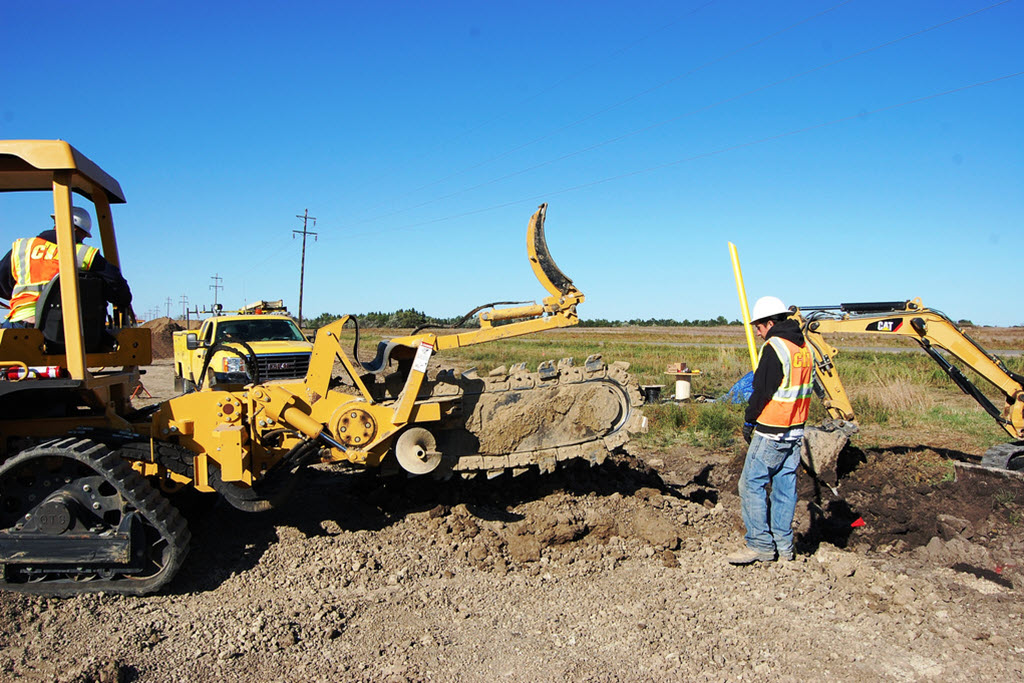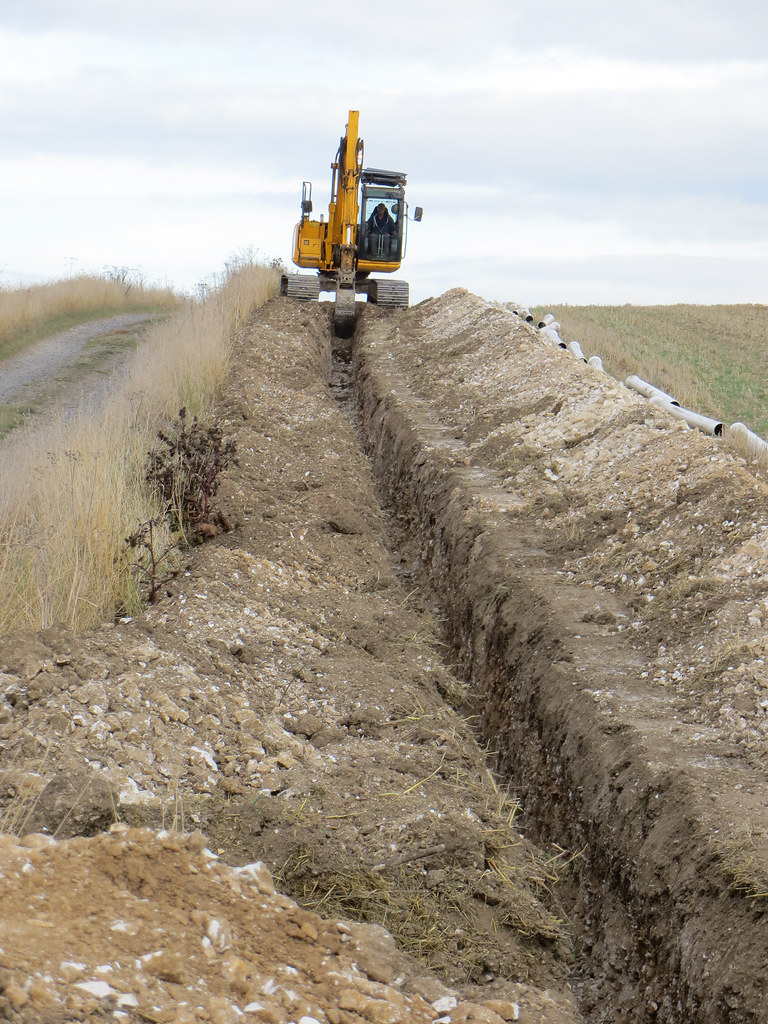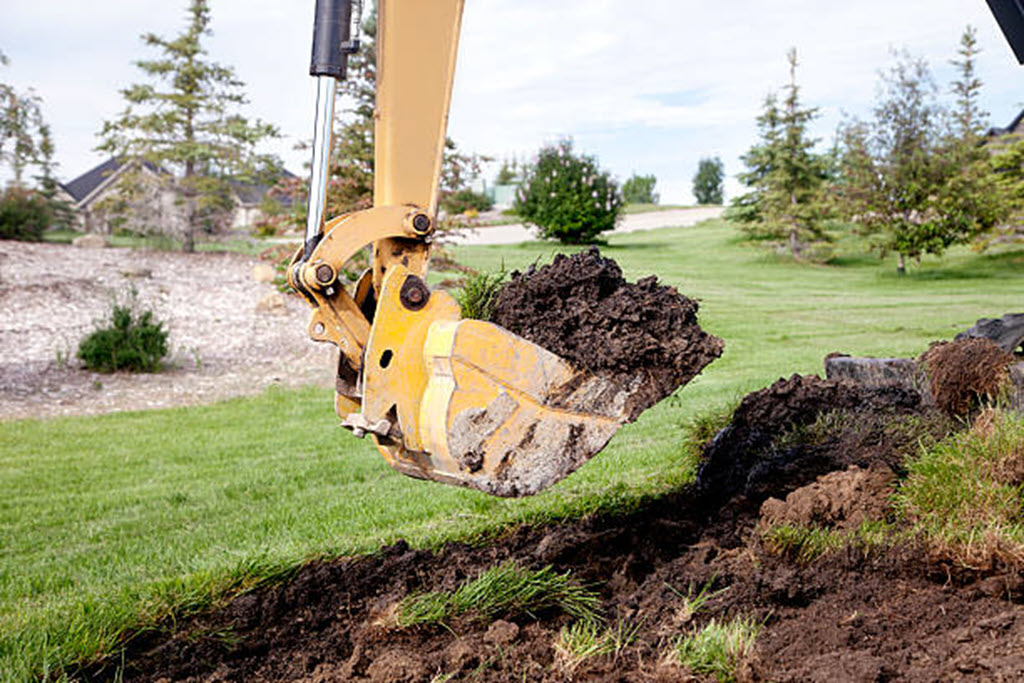Cable Trenchingsin Clay Township MI
Cable Trenching Done Right for Secure Utility Installations
We Are Locally Owned & Operated For Over 37 Years
Contact Us Today!
We Serve Businesses In And Around The Following Cities:
About Cable Trenchings
Introduction
Striving for a thriving commercial property in any city demands strategic consideration of various development elements. One such vital aspect in an infrastructure setup is cable trenching. Today, we delve into the essentials of cable trenching in Clay Township, skillfully executed by contractors like D&J Contracting. This extensive guide will serve as your go-to resource to understand the process, benefits, and real-world applications of cable trenching.
Understanding Cable Trenching
The art of cable trenching is more technical than digging holes in the ground. This process involves the systematic excavation of the earth to accommodate utilities like electricity, water, telecommunications, and data cables, providing intrinsic support to commercial establishments. Trusted trench digging services, such as those performed by D&J Contracting, ensure essential requirements are met and the overarching aspects of safety and efficiency are ingrained within the process.
The Cable Trenching Process
Beyond the concept, the task demands a set of steps. Typically initiated with mapping out the desired utility lines, trenching contractors understand the intricacy of the blueprint and execute the trenching work by adhering to local regulations and design specifics. Simultaneously, to ensure less disruption to the surface and immediate environment, trench digging contractors utilize methods like horizontal directional drilling, contributing to reduced soil displacement and streamlined work completion.
The Value of a Good Trench Digger Contractor
Within the spectrum of works carried out in Clay Township, many businesses have reaped the benefits of engaging an efficient trench digger contractor like D&J Contracting. A good contractor brings precision, efficiency, and timeliness to the project while ensuring minimal disruption to the environment. Equally significant is adherence to local regulations, working with utility providers, and integrating safety protocols, all effectively managed by a trenching excavation company.
Practical Benefits of Cable Trenching
Commercial properties opting for cable trenching services unlock a myriad of practical benefits. To start with, trenching for utilities allows businesses to install multiple utilities in one go, thus saving time and resources that would otherwise be spent on individual installation processes. Furthermore, taking services from trenching and boring contractors provides enhanced safety since underground utility lines are less likely to be damaged from surface incidents.
Cable Trenching for Propane Lines and Other Utilities
Trenching isn’t merely for laying electrical cables; it has found tremendous applications, including creating a trench for propane lines. Commercial entities looking to power their infrastructure with cleaner, efficient energy resources often consider propane. Trenching contractors in Clay Township have expertise in executing such tasks, conserving the aesthetic value of the property while adhering to safety norms.
Real-world Applications of Cable Trenching
The versatility of cable trenching gives it weight in real-world applications. From data center construction, school and hospital infrastructures to housing complexes and even townships, cable trenching has offered definite advantages. It enables smooth utility services, safeguards them from external threats, and ensures effective maintenance. Businesses in Clay Township have regularly preferred services like those provided by D&J Contracting to meet their cable trenching requirements.
Choosing the Right Trenching Excavation Company
Given the significant role that trenching plays in the overall scheme of utility setup, the choice of a trenching contractor demands careful consideration. The prominence of local companies, with their knowledge of the terrain and regulatory landscape, makes them the ideal choice. Locations like Clay Township are teeming with trenching companies who offer reliable services, like D&J Contracting– a firm that has a credible record of delivering projects and offers local insight.
Taking its vast experience in the arena, D&J Contracting underlines its commitment to maintaining top quality, ensuring that its clientele in Clay Township realizes the full potential of their utility needs. From considering the type of soil for trenching to managing the complexities of the underground utility network, their expertise brings immense value to the trenching service.
As we wind down, it is unmistakably clear that the impact of cable trenching on commercial properties is profound. Businesses in Clay Township that have pressed upon the importance of quality trenching services have certainly made pronounced strides in their overall functioning. There’s a lot to gain from effective trenching – and experienced trench digging contractors like D&J Contracting are here to help you reap those benefits and bolster your commercial establishment.
Cable Trenchings Gallery


Call Us Today to receive your Free Quote for
Cable Trenching in Clay Township
Serving: Clay Township, Michigan

About Clay Township, Michigan
The area was first settled by John Martin in 1805, and the area was originally referred to as Pointe du Chene (Oak Point). In 1826, the area was organized as Plainfield Township, which was named by early settler John K. Smith after his hometown of Plainfield, Vermont. A post office named Plainfield began operating here on April 5, 1826 with Smith serving as the first postmaster. In 1828, the township was reorganized and renamed after attorney and statesman Henry Clay, and the post office was later renamed Clay on December 23, 1835; Smith continued serving as postmaster. The post office was renamed Algonac on August 17, 1843. Algonac incorporated as a village within Clay Township in 1867. The village gained autonomy from the township when it incorporated as a city in 1967.
- Colony Tower Complex
- Harsen House
- LeRoy Smith House
- North Channel Shooting Club
- St. Clair River Informational Designation
- Stewart Farm / Memoir of Aura Stewart
- St. Clair Flats Front and Rear Range Light
According to the U.S. Census Bureau, the township has a total area of 82.47 square miles (213.60 km), of which 35.32 square miles (91.48 km) is land and 47.15 square miles (122.12 km) (57.17%) is water.
The township contains a large portion of water that includes areas along the St. Clair River mouth in the northern Anchor Bay area of Lake St. Clair, which contains numerous channels and canals. Directly across the river is the Walpole Island First Nation in Ontario, which is accessible via the Walpole–Algonac Ferry in downtown Algonac.
The St. Clair Flats State Wildlife Area and the majority of the St. John’s Marsh State Wildlife Area are located within Clay Township. Most of Algonac State Park is located within Clay Township with a small portion extending north into Cottrellville Township.
- Bedore is an unincorporated community located along the southern coast of Harsens Island at 42°33′28″N 82°36′47″W / 42.5578126°N 82.6129630°W.
- Clays Landing is an unincorporated community located at the southern terminus of M-154 on Harsens Island at 42°33′06″N 82°36′16″W / 42.5517016°N 82.6043512°W.
- Forster is an unincorporated community located just west of Bedore at 42°33′40″N 82°37′06″W / 42.5611459°N 82.6182410°W.
- Grand Pointe is an unincorporated community located in the northeastern area of Harsens Island at 42°35′58″N 82°32′43″W / 42.5994788°N 82.5451844°W. The affluent community was settled as early as 1888 by the Grand Pointe Improvement Company, and a post office operated briefly from October 16, 1889 until January 5, 1892.
- Harsens Island is the name of the post office that serves the island and several surrounding islands. Harsens Island was first settled as early as 1779 by James Harsen, who was the area’s first white settler. By 1783, Harsen had purchased the entire island from its native Indian population. As late as 1809, the island was also known as James (also Jacob or Jacobus) Island. The post office began operating under the name Sans Souci on April 24, 1900 and was renamed Harsens Island on December 31, 1960. The post office uses the 48028 ZIP Code.
- Maple Leaf is an unincorporated community located on Harsens Island just southwest of the community of Sans Souci at 42°34′41″N 82°34′11″W / 42.5780902°N 82.5696288°W.
- Miller is an unincorporated community located near the southernmost end of Harsens Island at the end of public road access at 42°32′57″N 82°39′32″W / 42.5492017°N 82.6587976°W.
- Muirs is an unincorporated community located along M-154 on Harsens Island at 42°33′23″N 82°35′14″W / 42.5564238°N 82.5871285°W.
- Pearl Beach is an unincorporated community and census-designated place (CDP) located along the southern end of the mainland at 42°37′36″N 82°35′52″W / 42.6267006°N 82.5976876°W.
- Perch Point is an unincorporated community located along M-29 in the northwestern portion of the township along the border with Ira Township at 42°39′54″N 82°37′13″W / 42.6650333°N 82.6201900°W.
- Pointe aux Tremble is an unincorporated community located along M-29 within the Pearl Beach CDP at 42°37′17″N 82°34′16″W / 42.6214230°N 82.5710196°W. The community was settled in 1904 as a station along the railway about 3.0 miles (4.8 km) west of Algonac.
- Riverside is an unincorporated community located in the southern portion of Harsens Island at 42°33′32″N 82°37′49″W / 42.5589237°N 82.6301859°W.
- Roberts Landing is an unincorporated community located along M-29 near Algonac State Park along the border with Cottrellville Township at 42°39′35″N 82°30′57″W / 42.6597561°N 82.5157415°W. The community was named after its first settler, who arrived here in 1830. The Roberts family settled the area as a popular fishing and hunting destination. A post office operated here from April 29, 1869 until December 15, 1895.
- Sans Souci is an unincorporated community located on Harsens Island at 42°34′52″N 82°33′44″W / 42.5811490°N 82.5621580°W.
As of the census of 2000, there were 9,822 people, 3,934 households, and 2,844 families residing in the township. The population density was 277.0 inhabitants per square mile (107.0/km). There were 5,325 housing units at an average density of 150.2 per square mile (58.0/km). The racial makeup of the township was 97.92% White, 0.20% African American, 0.68% Native American, 0.11% Asian, 0.21% from other races, and 0.87% from two or more races. Hispanic or Latino of any race were 0.85% of the population.
There were 3,934 households, out of which 27.9% had children under the age of 18 living with them, 61.3% were married couples living together, 7.0% had a female householder with no husband present, and 27.7% were non-families. 22.9% of all households were made up of individuals, and 9.2% had someone living alone who was 65 years of age or older. The average household size was 2.50 and the average family size was 2.94.
In the township the population was spread out, with 22.6% under the age of 18, 6.5% from 18 to 24, 28.2% from 25 to 44, 28.8% from 45 to 64, and 13.9% who were 65 years of age or older. The median age was 41 years. For every 100 females, there were 103.6 males. For every 100 females age 18 and over, there were 103.2 males.
The median income for a household in the township was $55,059, and the median income for a family was $63,182. Males had a median income of $48,053 versus $31,923 for females. The per capita income for the township was $27,169. About 2.3% of families and 4.7% of the population were below the poverty line, including 6.7% of those under age 18 and 3.6% of those age 65 or over.
Call Us Today to receive your Free Quote for
Cable Trenching in Clay Township
Related Services in Clay Township, Michigan
We Serve Businesses In The Following Zip Codes:
48007, 48015, 48021, 48026, 48035, 48036, 48038, 48042, 48043, 48044, 48045, 48046, 48047, 48048, 48050, 48051, 48066, 48071, 48080, 48081, 48082, 48083, 48084, 48085, 48088, 48089, 48090, 48091, 48092, 48093, 48098, 48099, 48225, 48230, 48236, 48310, 48311, 48312, 48313, 48314, 48315, 48316, 48317, 48318, 48397